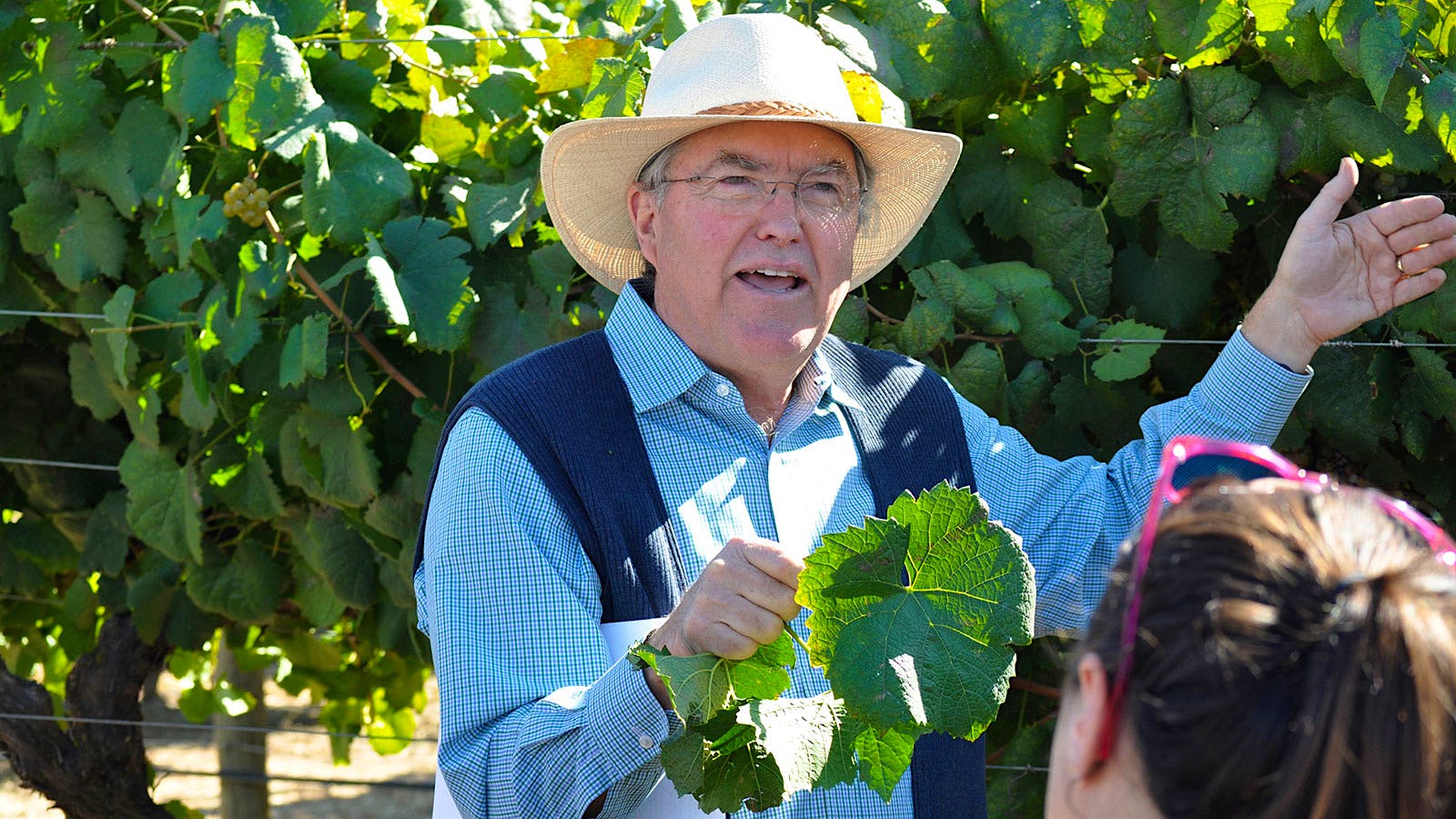Products You May Like
Andy Walker may not be a household name in the world of wine consumers, but his impact on wine is legendary.
Walker—formally Dr. M. Andrew Walker, but everyone calls him Andy—has educated hundreds of winemakers, grapegrowers and breeders around the world, and often educated their kids or even their grandkids. He’s edited the American Society of Enology and Viticulture Journal (ASEV) and directed numerous master’s degrees and Ph.D. studies in viticulture and enology at the University of California at Davis. He’s bred five different rootstocks that are resistant to root knot nematodes, a type of roundworm, allowing vineyards to thrive.
Now Walker, who joined the U.C. Davis department of viticulture and enology in 1989, is getting ready to call it a day this month.
In a recent virtual tribute, “The Legacy of Dr. Andrew Walker,” sponsored by the Robert Mondavi Institute for Wine and Food Science at U.C. Davis, Andrew Waterhouse, Institute chairman, said that Walker is “one of the most important grapevine breeders and geneticists in the world today.”
For years, Walker has taught two sections of the introductory viticultural practices course at the school. He’s taught new students how to choose appropriate scion and rootstocks, how to propagate their own vine materials, how to prune, train, and trellis vines and develop a vineyard.
“It’s because of him that I am now a professor of viticulture,” said California Polytechnic State University assistant professor Dr. Jean Dodson Peterson, a former student of Walker’s. “His advice and direction have also always focused on what would bring my life happiness.”
His grape breeding efforts have had just as big an impact. Walker began the tedious and time-consuming process of breeding grapes (each new variety can represent a commitment of 30 years from seed to fruit, using conventional breeding techniques) in 1989, the year he joined the U.C. Davis faculty. His research has focused on the biggest challenges facing the industry—developing new varieties and rootstocks with resistance to fanleaf virus, dagger and root-knot nematodes and the notorious vine killer phylloxera. His rootstocks can be found in vineyards around the world and have allowed growers to plant vineyards in places where growing grapes might once have been thought difficult at best.
In recent years, Walker’s research has focused on some of the newer threats to viticulture such as drought resistance (often triggered by climate change), salt tolerance, powdery mildew and the vine-killing Pierce’s disease, which costs the industry upwards of $100 million a year.
In 2019, Walker released five new grape varieties that share the distinction of combining the disease resistance of native American grape varieties with flavor profiles of classic European wine grapes (Vitis vinifera). Though breeders have been trying for nearly 100 years to breed resistance to Pierce’s disease, they’ve not been able to get rid of what Walker terms the “obnoxious characteristics” of disease-resistant native American grape varieties, meaning the wines don’t taste very good. As a result, growers and winemakers have steered clear of hybrid varieties, until recently that is.
Using genetic markers to enhance classic breeding methods, Walker has been able to greatly shorten the amount of time it takes to breed a new grape variety, and he’s been able to breed hybrid grape varieties which some believe produce wines that are indistinguishable from Vitis vinifera wines.
Chuck Wagner of Caymus and Adam Tolmach of the Ojai Vineyard have been growing some of Walker’s new varieties. They recently showed off some of the wines they have made with them at the annual Unified Wine & Grape Symposium in January. Both vintners were wowed by the new grape varieties.
What does retirement mean to a guy like Walker? It’s busy. “I have a lot of advanced selections [Pierce’s-resistant wine grapes, salt- and nematode-resistant rootstocks, fanleaf- and maybe red leaf–tolerant rootstocks] that I need to nudge to release,” Walker told Wine Spectator. “Maybe some consulting; maybe a rootstock book. And I plan to teach at least one of my grandkids to be a viticulturist!”
Stay on top of important wine stories with Wine Spectator’s free Breaking News Alerts.
